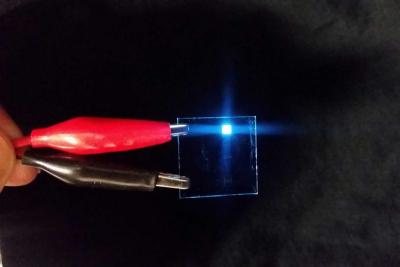Researchers from the University of Southern California (USC) led by Mark E. Thompson (who was the first to report on efficient phosphorescent OLEDs, later commercialized at UDC) developed a new copper-based phosphorescent OLED emitter compound, that could have several advantages to the currently-used iridium compounds.

The researchers say that copper-based emitters could be cheaper (as iridium is an expensive and rare element) - but more importantly could be the key to develop an efficient and long-lasting blue OLED emitter.
There has been attempts to develop copper-based emitters before (Germany-based Cynora started out trying to develop such materials, but later changed direction to TADF emitters), but these failed as the copper compounds had wear structures, and the materials suffered from very short lifetime. The new copper compounds now developed at USC have a more rigid molecular complex.
The team at USC submitted a patent for the new compounds. The group has strong ties with Universal Display (the lead author of this research is now working at UDC) and it will be interesting to see whether such materials could indeed be adopted commercially in the future.

